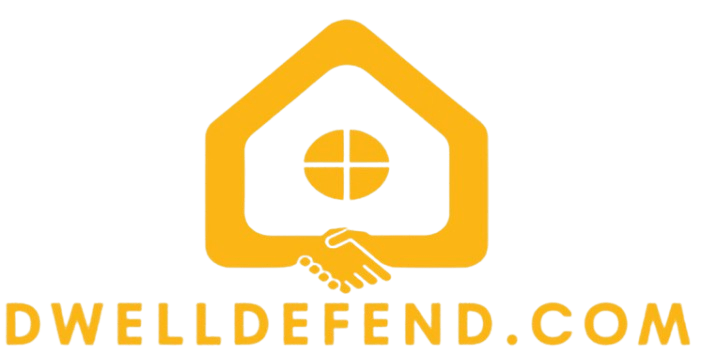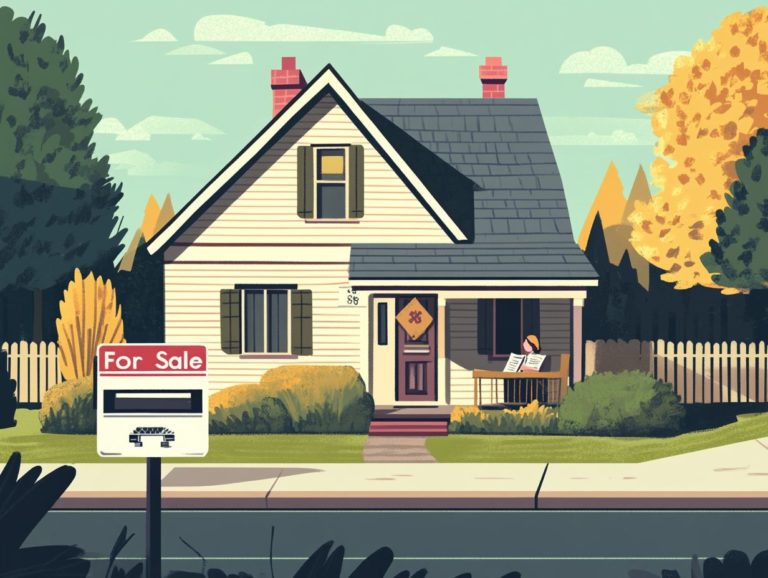7 Tips for Understanding Home Insurance Jargon
Understanding home insurance can feel overwhelming, especially with so many terms involved. Whether you re a first-time homeowner or looking to refresh your knowledge, it s essential to grasp the basic concepts.
This article offers seven key tips to help you navigate the confusing world of home insurance terms. You’ll be well-equipped to protect your most valuable asset.
Contents
- Key Takeaways:
- 1. Familiarize Yourself with Basic Insurance Terms
- 2. Know the Difference Between Replacement Cost and Actual Cash Value
- 3. Understand Your Coverage Limits
- 4. Be Aware of Exclusions and Endorsements
- 5. Know What Your Deductible Is
- 6. Understand the Claims Process
- 7. Review Your Policy Regularly
- What Is Home Insurance and Why Do You Need It?
- Frequently Asked Questions
- What is home insurance jargon?
- Why is it important to understand home insurance jargon?
- What are some common terms used in home insurance jargon?
- How can I improve my understanding of home insurance jargon?
- Are there any consequences for not understanding home insurance jargon?
- Can I negotiate the use of jargon in my home insurance policy?
Key Takeaways:

1. Familiarize Yourself with Basic Insurance Terms
Knowing basic insurance terms is crucial for homeowners seeking good coverage. This knowledge helps you make informed decisions about options, premiums, and potential claims, especially when considering 7 tips for understanding your policy’s fine print.
These terms improve your ability to assess your needs and find the right coverage. For example, a deductible is what you pay before your insurance kicks in typically, higher deductibles mean lower premiums.
Exclusions are conditions your policy won t cover. Endorsements are additions that modify your coverage. If you live in a flood-prone area, adding flood insurance can help protect your investment.
The declarations page summarizes your coverage details, giving you important insight into what is insured.
2. Know the Difference Between Replacement Cost and Actual Cash Value
Understanding replacement cost versus actual cash value is vital for homeowners. This knowledge affects how much you ll receive in a claim and impacts your financial recovery.
Replacement cost is the amount needed to replace damaged property with a new equivalent. Imagine your roof is destroyed in a storm; replacement cost allows you to rebuild with current materials at today s prices.
Actual cash value considers depreciation, reflecting wear and tear over time. If your roof were insured under actual cash value, the payout would be lower, taking its age and condition into account.
Knowing these differences is essential when choosing the right coverage for your needs.
3. Understand Your Coverage Limits
Knowing your coverage limits is crucial to protect against various risks, from disasters to theft. This awareness enhances your peace of mind and financial security.
Regularly evaluate your home s value and its contents. Consider current market conditions, recent renovations, and potential replacement costs.
Having adequate coverage becomes clear during severe weather events like hurricanes. Underinsurance can lead to major financial losses.
Review your policy annually and adjust coverage limits as needed to address immediate needs and safeguard against unforeseen disasters.
4. Be Aware of Exclusions and Endorsements
Understanding the exclusions and endorsements in your homeowners insurance policy is essential. These factors can greatly impact your coverage and define your financial responsibilities if you need to file a claim for damages from specific risks, like floods or earthquakes.
Exclusions are essentially the fine print specific situations or damages that your policy won t cover, such as general wear and tear, flooding, or deliberate acts. For example, if your basement experiences a flood due to a heavy rainstorm, your standard policy likely won’t cover the damage unless you’ve added flood insurance as an endorsement.
Conversely, endorsements are optional add-ons that enhance your coverage for particular risks. They can protect you against various incidents, such as identity theft or equipment breakdown. This provides you with peace of mind and customized protection tailored to your individual needs.
5. Know What Your Deductible Is

Understanding your deductible is crucial in homeowners insurance. It significantly impacts your out-of-pocket expenses during a claim and can also affect your premiums. This makes it a key aspect of managing your money and understanding risks.
Consider this: if you choose a higher deductible, you might enjoy lower monthly premiums, which can be advantageous if you prefer having more disposable income or if you maintain a solid emergency fund. Choosing a higher deductible could lead to larger upfront costs when you file a claim, especially after significant events like storms or fires.
On the flip side, selecting a lower deductible can relieve some financial strain during claims, but it generally leads to higher premiums. Grasping these dynamics enables you to make informed decisions, ensuring that you choose deductibles that align with your financial capabilities and risk tolerance.
6. Understand the Claims Process
Do you know how to file a claim quickly and effectively? Understanding the claims process in homeowners insurance is crucial for protecting your property and ensuring you can recover effectively. This process outlines the necessary steps to file a claim for damages from risks like natural disasters, theft, or vandalism, ensuring you receive the coverage you deserve.
To navigate this process successfully, begin by thoroughly documenting all damage. This includes taking clear photographs and creating a detailed list of damaged items along with their approximate values.
Once you have sufficient evidence, reach out to your insurance agent, who will guide you through the specifics of your policy. It s vital to understand the terms related to your claim, such as coverage limits and exclusions, as these details will directly impact your reimbursement.
After you file your claim, remain mindful of the timelines for approval, which can vary depending on the complexity of the damage and the efficiency of the insurance company in processing claims.
7. Review Your Policy Regularly
Make it a point to review your homeowners insurance policy every year. Regularly reviewing your policy is crucial to ensure your coverage aligns with your current needs, providing you with adequate protection against emerging risks or fluctuations in your home’s value.
This practice can save you money and keep you protected, often with the insightful guidance of your insurance agents. Schedule these reviews at least once a year or whenever significant life events arise think renovations, new valuables, or shifts in your neighborhood dynamics.
During these discussions, address any recent increases in property value, evaluate whether your coverage for personal belongings is sufficient, and identify new risks, such as natural disasters or evolving safety concerns.
By engaging proactively with your insurance agents, you can uncover potential savings, explore new policy options, and enhance your overall protection.
What Is Home Insurance and Why Do You Need It?
Home insurance, often called homeowners insurance, is a policy that protects your home, belongings, and liability from risks. It is crucial for financial security and peace of mind for homeowners.
This insurance covers threats like fire, water damage, and liability claims from accidents on your property. These factors can lead to significant financial losses.
Typically, homeowners insurance includes dwelling coverage for the structure itself and personal property coverage for valuables like furniture, electronics, and clothing. Liability coverage protects you from legal claims if someone gets hurt on your property.
Having homeowners insurance acts as a safety net against unforeseen events. It also aids in home repairs and replacing possessions, providing invaluable financial support during challenging times.
What Are the Different Types of Home Insurance?
Understanding the various types of home insurance available helps you select the policy that best meets your needs. It ensures adequate protection against risks like fire, theft, and natural disasters.
By exploring options such as HO-1, HO-2, HO-3, and HO-5, you ll gain insights into what each policy covers. For instance, an HO-3 policy is often the go-to choice for its comprehensive coverage, protecting you against all perils unless explicitly excluded.
In contrast, an HO-1 offers more limited protection, covering only specific risks. This distinction allows you to align your choices with factors such as your property s location, age, and personal belongings.
Ultimately, this approach leads you to a tailored insurance solution that brings peace of mind.
What Factors Affect the Cost of Home Insurance?

Several factors influence the cost of your home insurance premiums, including your home s value and location. Its vulnerability to risks like natural disasters, theft, and vandalism is also crucial.
Check geographical risks like living in a flood zone or near a fault line. These factors can drive up your premiums.
The overall value of your personal property plays a significant role as well. Higher-value items require more coverage, which can increase costs.
Your home s features, such as security systems, updated roofing, and building materials, can either elevate or reduce your premiums. Recognizing how these elements intertwine enables you to make informed decisions.
How Can You Lower Your Home Insurance Premiums?
Looking for ways to slash your home insurance premiums? It s an exciting opportunity for substantial savings while ensuring you maintain adequate coverage.
Simple strategies, like enhancing your home security and capitalizing on available discounts, can make a real difference. Investing in a reliable security system, such as alarms or smart locks, not only bolsters the safety of your property but may also qualify you for lower premiums.
Regular maintenance, like fixing leaky roofs or addressing plumbing issues, showcases responsible homeownership and can positively impact your insurance rates.
Consider bundling your home and auto insurance policies. This often results in significant discounts. Feel free to negotiate with your insurance agents; it s your money, and you deserve the best rate!
Presenting any improvements you’ve made or comparing other quotes can enable you to secure better rates, making the entire process rewarding for your finances.
What Are the Most Commonly Used Insurance Terms in Home Insurance?
Familiarizing yourself with commonly used insurance terms in homeowners insurance is essential for navigating your policy effectively. This knowledge enables you to make informed decisions and understand how to understand your home insurance policy and fully comprehend your coverage.
Key concepts include premiums and deductibles. Premiums are the regular payments you make to maintain coverage, while deductibles are the out-of-pocket expenses you cover before your insurance kicks in.
Understanding exclusions is also crucial. Exclusions are specific instances or types of damage your policy does not cover, which could significantly impact your claims. Endorsements are additional provisions or changes made to a standard policy, allowing you to adjust coverage according to your needs.
Mastering these terms clarifies the nuances of homeowners insurance, ensuring you know how to understand your home insurance policy and are adequately protected.
What Should You Do If You Don’t Understand Something in Your Policy?
If anything in your homeowners insurance policy confuses you, reach out to your insurance agent or company for clarification. This ensures you fully grasp your coverage and obligations.
Gather all relevant documents related to your policy, including declarations pages, endorsements, and any correspondence with your agent. Write down your specific questions or concerns to communicate clearly and efficiently.
Regular check-ins with your agent can also enhance your understanding and allow for necessary adjustments over time.
Frequently Asked Questions
What is home insurance jargon?

Home insurance jargon refers to the technical terms and specialized language used in the insurance industry to describe policies, coverage, and other important information related to home insurance misconceptions.
Why is it important to understand home insurance jargon?
Understanding home insurance jargon is crucial for homeowners. It helps them make informed decisions when selecting a policy, filing a claim, or communicating with their insurance provider. Learning how to understand home insurance providers’ terminology ensures that homeowners fully grasp the coverage and benefits they are paying for.
What are some common terms used in home insurance jargon?
Common terms in home insurance jargon include deductible, premium, liability coverage, personal property, peril, replacement cost, and actual cash value. For a deeper insight, consider understanding the basics of home insurance policies.
How can I improve my understanding of home insurance jargon?
Here are seven tips for understanding home insurance jargon:
- Research and familiarize yourself with common insurance terms.
- Read through your policy carefully and ask your provider for clarification on unfamiliar terms.
- Consult with a trusted insurance agent or broker.
- Use online resources, such as articles and glossaries, to learn more about home insurance terminology.
- Join online communities or forums where homeowners discuss insurance-related topics.
- Ask questions and seek clarification whenever you’re unsure about a term or concept.
- Regularly review your policy to understand any changes or updates in jargon.
Are there any consequences for not understanding home insurance jargon?
Yes, not understanding home insurance jargon may cause misunderstandings and potentially costly mistakes. To avoid this, learning how to read home insurance policy language can help ensure you have adequate coverage and don’t miss out on discounts or benefits.
Can I negotiate the use of jargon in my home insurance policy?
Home insurance policies are often standardized, making jargon necessary for clarity and consistency among providers. However, to better understand your coverage, you can always request plain language explanations or simpler terms from your insurance provider, and consider learning more about how to avoid common home insurance pitfalls.



